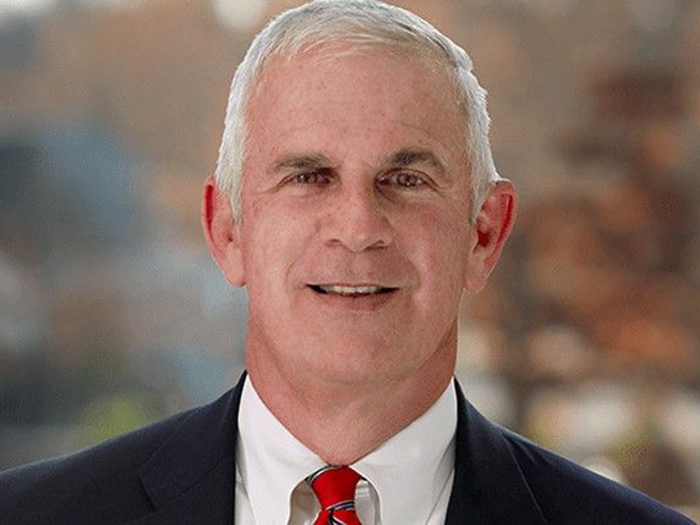Insider Insights: What to Know Before Switching Workers’ Comp TPAs

Most workers’ compensation programs work closely with third-party administrators (TPAs), which typically work under contract with an insurance company to administer workplace injury claims.
 And while many TPAs have long-standing relationships with the programs they serve, periodically evaluating the success of that relationship is paramount. This is a topic of key interest for the National Comp conference, and can be found on this year’s program agenda.
And while many TPAs have long-standing relationships with the programs they serve, periodically evaluating the success of that relationship is paramount. This is a topic of key interest for the National Comp conference, and can be found on this year’s program agenda.
Alvina Garcia, director, risk management at 99 Cents Only Stores, Tanya Parker, director of client engagement at Safety National and Lisa LeBlanc of Orion Risk Management will present A Change Would Do You Good (Or Not): What to Consider Before Switching TPAs on Sept. 20th.
In advance of the presentation, Garcia and Parker shared their thoughts with Risk & Insurance for those who might be considering changing TPAs. They stress that it’s vital to thoroughly access the long-term implications of what that change may mean to your program and your bottom line.
First Things First
Alvina Garcia, director, risk management at 99 Cents Only Stores, said the primary item that needs to be questioned to determine whether a change is necessary are whether the incumbent TPA is meeting expectations and goals set by the employer.
“If a review of the program does not show a marked consistent improvement in a reduction of incurred claim costs and claim closures, a more thorough review of the TPA’s performance should be conducted to determine if the performance issues are directly the result of the TPA’s work or if there are other external barriers that have prevented the TPA from meeting or exceeding expectations,” Garcia said.
Is the pricing competitive? Is the incumbent up-to-date in their tech capabilities and offerings?
Tanya Parker, director of client engagement at Safety National, said it’s important to determine if there is anything that can be done or fixed with the incumbent TPA before going down the TPA change path.
“Everything should be exhausted before making a move,” Parker said.
Let’s Look at That Contract
The insured should also look at their contract with the TPA. They need to be aware of the termination clauses and timeframes. Also, Parker suggested that the insured determine if they are going to move all claims to the new TPA or just start with new claims going forward.
“Some carriers might charge for a TPA change,” Parker said. “This process can be costly, so everything needs to be considered before making a change. Also, determine if this is going to be a mid-term TPA change or at renewal. Some carriers may not allow mid-term TPA changes or have very strict guidelines that must be followed.”
Garcia also advised that it’s important to determine if the organization is undergoing any other significant changes that would adversely impact the transition on the organization and whether there are any financial impacts associated with making the change.
“Also consider whether any added resources will be required to ensure the transition is as smooth as possible for both the employer and the injured employees and whether any foreseen hurdles need to be removed before initiating the change,” Garcia said.
Making a Selection
Parker advised that the insured should work closely with their broker in identifying appropriate TPAs. They should also check with their carrier to make sure the identified TPAs are approved by the carrier.
Once the TPAs are identified, a request for proposal (RFP) should be sent to those TPAs.
“The employer should invite the incumbent to participate in the process and allow them to present changes to the program and pricing that maybe had not been considered before,” Garcia said.
Introductory meetings should be held with each TPA individually, with the key players from each organization, followed by a review of their RMIS and the reporting capabilities. Garcia said this should be followed by a discussion of the employer’s specific needs for additional reporting and structure of the claims team.
“Review pricing and hold a closing meeting to address any unanswered questions and/or any pricing adjustment requests,” Garcia said. “This should place the employer in an advantageous position to make the appropriate decision on a new TPA.”
Parker pointed to some key items that can be asked during the selection process. These are not all-encompassing and the RFP should be specific to the client:
- Who is the team that will service the account? Are the adjusters “dedicated” or “designated?”
- Do the adjusters have experience in the industry?
- Does the TPA have global capabilities if the company has operations overseas?
- How does the TPA ensure internal quality control and correct any problems when they arise?
- What are the TPA’s best practices?
- What is the average caseload for the adjusters?
- What sort of claim reviews does the TPA allow? On-site or telephonic or a combination? Is there an additional fee for these?
- Does the TPA have an intake service? How does the TPA allow new claim reporting?
- What does the TPA’s claim system look like? What are its capabilities? How do I know the data is accurate?
- Does the TPA use predictive analytics or provide benchmarking?
- Does the TPA have service instructions that can be customized to the client?
Making the Switch
When facilitating a change in TPAs, companies should strive for minimal disruption to their injured workers and risk management team.
“Most of the national TPAs are used to working with each other and usually have specific people who will work on the transition process,” Parker said.
“It is imperative to get all of those folks together to discuss the process and timelines. The carrier can and should participate on those calls to make sure that the TPAs work together to ensure a smooth transition with little disruption to all parties. Very detailed timelines and layout of responsibilities is critical so that everybody knows what everyone is doing.”
Garcia recommended creating a “hot sheet” of claims that need immediate attention upon transfer and provide the new adjusting team specific guidance on these claims.
“Set expectations and goals of what needs to occur in the first 30/60/90 days,” Garcia said.
“Ensure that the incumbent TPA adequately prepares the files for transfer — review how and when the transfer will occur, what will be included (and what may not), formats and what the succeeding should receive. Confirm how file attachments and video will be delivered and when and whether there are any claims housed outside of their RMIS or storage system that will be transferred separately. This will place the employer and the succeeding TPA a good position to foresee obstacles and look at added resources if necessary.”
One of the main mistakes that Parker sees with TPA changes is not allowing enough time for the process. This is a lengthy process that can take months.
“Ample time should be allowed in order to evaluate the TPAs thoroughly, get a chance to interview the TPAs as well as demo their systems,” Parker said. “Once a new TPA is identified, then there needs to be enough time to ensure a very smooth and timely transition.”
Not having a good understanding of what the transition should look like and not bringing all parties together to agree to and be held accountable to expectations is another common mistake with TPA transitions.
“The employer should play a direct role in managing the transition and ensuring that all parties are meeting their expected deadlines,” Garcia said.
“A transition, depending on the size of the program, can take months, maybe even a year to fully close out all items with the incumbent. The employer should adequately plan to have a designee who will be able to continue to follow up on any outstanding items until fully resolved.” &
 Curious about what else should be on your mind when deciding to make a switch in TPAs? At National Comp 2023, Alvina Garcia and Tanya Parker will join forces with Lisa LeBlanc to detail the best practices workers’ comp programs can put into play before, during and after their TPA decisions.
Curious about what else should be on your mind when deciding to make a switch in TPAs? At National Comp 2023, Alvina Garcia and Tanya Parker will join forces with Lisa LeBlanc to detail the best practices workers’ comp programs can put into play before, during and after their TPA decisions.











